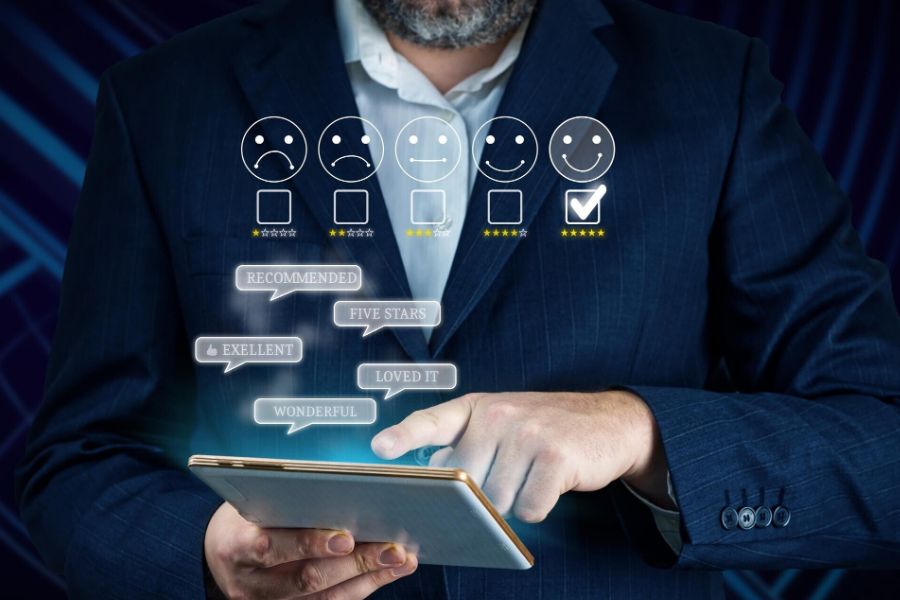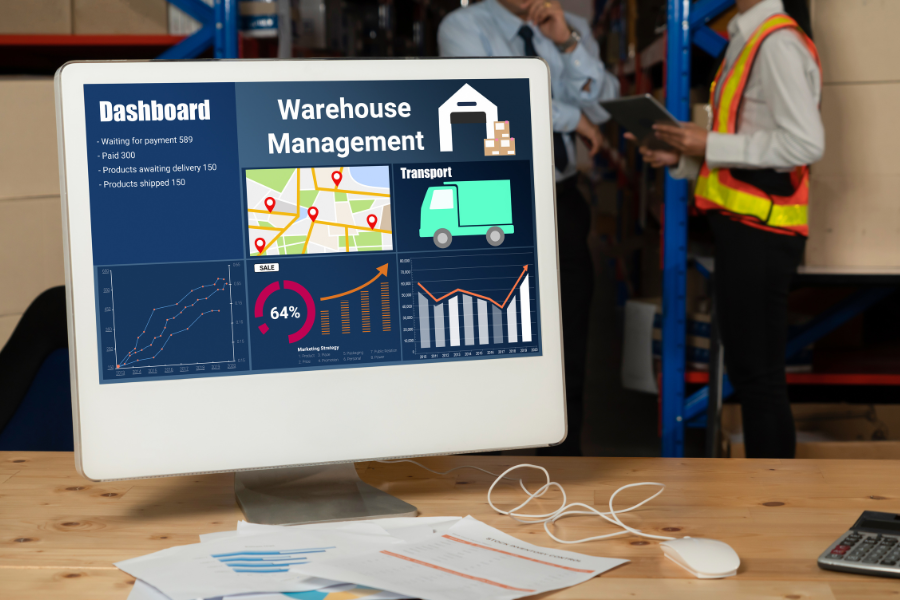If statistics show that businesses delivering superior customer experiences see revenues soar between 4% and 8% above their market, does that make you rethink your strategy? In 2024’s competitive retail landscape, prioritizing customer experience is crucial. With consumer expectations at an all-time high and technological advancements continuously reshaping shopping behaviors, mastering customer experience has become essential. This guide provides comprehensive insights and practical strategies for retailers to exceed customer experience in retail, ensuring your business thrives in this dynamic environment.
What is Customer Experience in Retail and Why Does It Matter?
Customer experience (CX) in retail refers to customers’ overall impression based on their interactions with a brand, from initial contact to post-purchase follow-up. It’s crucial because a positive CX builds loyalty, trust, and sales, while a negative one can lead to customer abandonment. In today’s multi-channel environment, consistency across touchpoints (online and physical) is key.
Effective CX strategies involve understanding customers, ensuring a consistent journey, modernizing technology, measuring satisfaction, and implementing loyalty programs.
Although customer experience remains crucial, the nature of these interactions has evolved significantly over the past decade. Technological advancements, particularly in eCommerce, have transformed shopping habits. Customers now engage with brands through multiple touchpoints—websites, apps, newsletters, and physical stores, sometimes without ever setting foot in a store.
Due to this complexity, the retail customer journey needs to be consistent across all touchpoints, including website design, apps, and physical spaces. Customers desire and expect this consistency, as it enhances their overall experience.
Customer experience can make or break relationships between companies and their customers. A positive experience fosters loyalty and trust, boosts sales, and enhances customer satisfaction. Conversely, a poor CX can drive customers away from the brand entirely.
Customer Experience Trends in 2024
Here are some key customer experience (CX) trends in retail for 2024:
1. Increased adoption of AI and chatbots
AI continues to revolutionize customer interactions, with 64% of CX leaders planning to increase investments in chatbot technology. This shift aims to enhance the personalization and efficiency of customer service and improve emotional connections with customers.
2. Enhanced data privacy and security
With growing concerns over data breaches, 77% of CX leaders feel responsible for ensuring the security of customer data. This trend highlights the need for robust data privacy measures to build trust and meet regulatory requirements
3. Conversational commerce
The integration of conversational commerce is set to grow, with 56% of organizations planning to implement this technology within the next year. This trend focuses on using messaging apps and voice assistants to provide instant, personalized customer service, thereby driving retail growth.
4. AI transparency and trustworthiness
Consumers increasingly demand transparency regarding how their data is used, especially with AI technologies. Businesses that openly communicate their AI practices can build greater trust with their customers. This trend emphasizes the importance of clear, honest communication about data usage and AI implementation.
These trends underscore the pivotal role of technology and data security in shaping the future of customer experience in retail.
Approaches to Improve the Customer Experience in Retail in 2024
To truly excel, you must see things from your customer’s perspective. Evaluate these approaches with that mindset to gauge their effectiveness. We’ll break this section into two parts: Physical Stores and Online.
Physical Stores
- Personalization
Transform ordinary visits into memorable experiences by training staff to recognize and greet regular customers by name. This personal touch fosters a strong connection and loyalty.
- Technology integration
Integrating augmented reality (AR) apps can elevate the shopping experience. These tools make shopping interactive, helping customers visualize products and make informed decisions.
- Streamlined checkout
Reduce wait times and improve efficiency with mobile point-of-sale systems. A quick, seamless checkout process leaves a lasting positive impression.
- Unique in-store events
Make your store a destination by hosting events like book readings, workshops, or product demonstrations. These events create engaging, memorable experiences that draw customers back.
- Enhanced In-store Navigation
Implement digital kiosks or mobile apps that help customers locate products quickly, ensuring they find what they need without frustration.
Online
- Personalized journeys
Harness the power of AI to offer personalized product recommendations based on past behavior. This tailored approach increases engagement and sales.
- Seamless omnichannel experiences
Ensure a smooth transition between online and in-store experiences. Customers should feel a consistent and cohesive brand experience, no matter where they shop.
- AR features
Enhance online shopping with virtual try-on tools. These features allow customers to see how products look on them, reducing uncertainty and returns.
- 24/7 support
Provide round-the-clock assistance through chatbots and live agents. Immediate support ensures customer satisfaction and trust
- Effortless Returns
Simplify the return process with easy-to-follow instructions and multiple options for returning items. A hassle-free return policy can significantly boost customer confidence and repeat purchases.
- Loyalty Programs
Develop robust loyalty programs that reward repeat purchases and offer personalized incentives. These programs encourage customer retention and increase lifetime value.
5 Strategies for Mastering Customer Experience in Retail in 2024
Customer experience plays a more critical role in retail than ever. Retailers must adopt innovative strategies to meet and exceed customer expectations. Here are 5 strategies to excel in customer experience in 2024.
Deliver a Seamless Omnichannel Experience
A seamless omnichannel experience ensures customers can effortlessly transition between online and offline channels. This requires integrating various sales channels so customers enjoy a consistent shopping experience regardless of where or how they shop.
For example, a customer browsing products on a mobile app should find the same items in-store with no discrepancies in price or availability. Retailers like Nordstrom excel at this by synchronizing their inventory systems across all platforms, allowing customers to check store availability online and reserve items for in-store pickup.
ConnectPOS enhances this integration by enabling real-time synchronization of inventory, promotions, and customer data across multiple channels, ensuring a uniform experience whether shopping online, in-store, or via a mobile app.
Offer Personalized Interactions
Personalization in retail involves tailoring the shopping experience to individual customer preferences, significantly improving satisfaction and loyalty.
Amazon excels at personalization by using data analytics to recommend products based on past purchases and browsing behavior. Similarly, Sephora uses customer data to provide personalized product recommendations and beauty tips through its app.
Retailers can leverage CRM systems and AI-driven analytics to achieve this level of personalization. These tools help gather and analyze customer data, enabling targeted promotions, relevant product recommendations, and personalized in-store interactions.
ConnectPOS integrates with various CRM systems, providing a unified platform for managing customer relationships and personalizing interactions.
Create an Engaging In-Store Environment
Creating an engaging in-store environment is crucial for attracting and retaining customers. Retail stores should offer more than just products; they should provide unique and memorable experiences.
Apple Stores, known for their engaging environments, feature minimalist designs, interactive product displays, and knowledgeable staff. Customers are encouraged to try products, attend workshops, and seek technical support in a welcoming atmosphere. IKEA creates an immersive shopping experience with fully furnished showrooms that inspire customers with practical design ideas.
These engaging environments encourage customers to spend more time in-store and increase the likelihood of purchases. Retailers can enhance their in-store environments with interactive displays, immersive settings, and well-trained staff.
ConnectPOS supports these efforts by providing tools to manage in-store promotions, monitor customer interactions, and ensure a seamless checkout process.
Ensure Efficient and Responsive Customer Service
Efficient and responsive customer service is vital for resolving issues and maintaining customer satisfaction. Retailers need to be accessible and quick to address customer inquiries and concerns.
Zappos is renowned for exceptional customer service, with representatives available 24/7 and empowered to exceed customer expectations. Retailers can provide high-quality service by utilizing AI-driven chatbots for instant responses, offering multi-channel support, and training staff to handle a variety of customer issues effectively.
ConnectPOS integrates with customer service platforms, enabling retailers to manage customer interactions efficiently and respond promptly to inquiries.
Collect and Utilize Customer Feedback
Collecting and utilizing customer feedback is essential for continuous improvement. Feedback helps identify areas where the customer experience can be enhanced.
Starbucks excels at using customer feedback to drive innovation through their “My Starbucks Idea” platform, where customers can submit suggestions for new products or services, many of which have been implemented. Retailers can gather feedback through surveys, social media, and direct interactions. Analyzing this feedback allows for the identification of trends and areas needing improvement. ConnectPOS offers tools for collecting and analyzing customer feedback, providing valuable insights that can be used to refine the customer experience.
Integrating these strategies can significantly elevate the customer experience in retail. However, managing and synchronizing various aspects of retail operations can be challenging without the right tools.
Leverage ConnectPOS for a Top-notch Customer Experience in Retail
ConnectPOS offers a comprehensive solution to streamline your retail processes and elevate your customer experience to new heights.
ConnectPOS supports real-time inventory, promotions, and customer data synchronization across multiple channels. This ensures consistent and personalized interactions whether customers shop online, in-store, or via mobile. A seamless omnichannel experience is vital for meeting modern shoppers’ high expectations for convenience and consistency.
ConnectPOS enhances the in-store environment by enabling interactive displays and efficient checkout processes. This creates an engaging shopping experience. Integration with CRM systems allows for personalized interactions and targeted promotions, making customers feel valued and understood.
Moreover, ConnectPOS ensures efficient customer service by being compatible with customer service platforms. This ensures prompt and responsive support, helping you address inquiries swiftly and maintain high customer satisfaction. Quick issue resolution is crucial for keeping customers happy and loyal.
Furthermore, ConnectPOS provides robust tools for collecting and analyzing customer feedback. This offers valuable insights into preferences and pain points, enabling continuous improvement. Retailers can adapt to evolving customer needs and stay ahead of the competition.
By leveraging ConnectPOS, retailers can deliver a seamless omnichannel experience, offer personalized interactions, and create an engaging in-store environment. It also ensures efficient customer service and utilizes valuable feedback.
Key Metrics for Evaluating Customer Experience in Retail
Net Promoter Score (NPS)
Net Promoter Score (NPS) is a widely used metric that measures customer loyalty by asking customers how likely they are to recommend a company to others on a scale of 0 to 10. Responses categorize customers into promoters (9-10), passives (7-8), and detractors (0-6).
The NPS is calculated by subtracting the percentage of detractors from the percentage of promoters. A higher NPS indicates strong customer loyalty and satisfaction. This metric is crucial for identifying areas of improvement and driving strategies to enhance customer advocacy and retention.
Sentiment Analysis of Free Text Data
Sentiment analysis involves analyzing customer feedback, reviews, and social media comments to gauge the overall sentiment toward a brand.
Using natural language processing (NLP) tools, retailers can categorize feedback as positive, negative, or neutral. This analysis provides deeper insights into customer emotions and perceptions, allowing businesses to address concerns, celebrate successes, and tailor their strategies accordingly. Retailers can stay attuned to customer needs by continuously monitoring sentiment and proactively managing their reputation.
Customer Satisfaction (CSAT)
Customer Satisfaction (CSAT) measures customers’ satisfaction with a specific interaction or overall experience. Typically, customers are asked to rate their satisfaction on a scale (e.g., 1-5 or 1-10) after a purchase or service interaction.
This metric helps identify strengths and weaknesses in customer service, product quality, and other key areas. High CSAT scores indicate that customers are pleased with their experience, while low scores highlight areas needing improvement. Regularly tracking CSAT enables retailers to make data-driven decisions to enhance customer satisfaction.
Customer Effort Score (CES)
Customer Effort Score (CES) measures the ease with which customers can complete a transaction or resolve an issue. Customers rate their experience on a scale from “very easy” to “very difficult.”
A low effort score indicates a smooth, hassle-free experience, while a high score suggests friction points that need addressing. CES is particularly useful for evaluating the effectiveness of customer support and identifying opportunities to streamline processes. By reducing customer effort, retailers can improve overall satisfaction and increase the likelihood of repeat business.
Conversion Rate
Conversion rate is the percentage of visitors to a store or website who complete a desired action, such as making a purchase. It is calculated by dividing the number of conversions by the total number of visitors and multiplying by 100.
A high conversion rate indicates that the shopping experience effectively encourages visitors to become customers. This metric helps retailers assess the effectiveness of their marketing, website design, and sales strategies. Improving the conversion rate can lead to increased sales and revenue.
Average Transaction Value (ATV)
The Average Transaction Value (ATV) measures the average amount customers spend per transaction. It is calculated by dividing total revenue by the number of transactions.
A higher ATV indicates that customers are spending more per visit, which can result from effective upselling, cross-selling, and marketing strategies. Monitoring ATV helps retailers understand customer spending behavior and identify opportunities to increase sales. Strategies to boost ATV include offering bundled products, personalized recommendations, and targeted promotions.
FAQs: Customer Experience In Retail
- How do you create a good customer experience in retail?
Creating a good customer experience in retail involves a combination of attentive service, thoughtful store design, and leveraging technology to meet and exceed customer expectations. Here are some key strategies:
- Personalization: Tailor experiences and recommendations based on customer preferences and purchase history.
- Customer service: Provide knowledgeable, friendly, and responsive service both in-store and online.
- Store atmosphere: Ensure the store is clean, well-organized, and inviting.
- Omnichannel experience: Offer a seamless experience across all channels, including in-store, online, and mobile.
- Convenience: Make shopping easy with simple navigation, efficient checkout processes, and flexible payment options.
- Feedback: Actively seek and respond to customer feedback to continually improve the experience.
- What are examples of retail experience?
Retail experience encompasses a variety of roles and responsibilities within a retail environment. Here are some common examples:
- Sales associate: Engaging with customers, answering questions, and assisting with product selections.
- Cashier: Handling transactions, processing payments, and providing receipts to customers.
- Customer service representative: Addressing customer inquiries, resolving complaints, and providing product information.
- Stock clerk: Restocking shelves, organizing inventory, and maintaining the store’s appearance.
- Visual merchandiser: Creating appealing displays, arranging products attractively, and implementing marketing strategies to boost sales.
- Department manager: Supervising staff, managing inventory, and ensuring that sales targets are met in a specific department.
Each of these roles contributes to a retail business’s overall customer experience and operational efficiency.
- What is a good example of good customer service?
A good example of good customer service in retail could be: A customer enters a store looking for a specific item. The sales associate greets them warmly and listens to their needs. Even though the item is out of stock, the associate checks the inventory in other locations and offers to order it for the customer with free home delivery.
Additionally, the associate suggests alternative products that might meet the customer’s needs. The customer leaves feeling valued and taken care of, and they receive a follow-up email thanking them for their visit and confirming the order details. This comprehensive approach exemplifies good customer service.
Conclusion
In short, mastering customer experience in retail requires a comprehensive approach that integrates technology, personalization, and seamless omnichannel strategies. Retailers must adopt innovative practices to meet rising consumer expectations, from leveraging AI and chatbots to ensuring robust data privacy and creating engaging in-store environments. Key metrics such as NPS, CSAT, and CES are essential for evaluating and enhancing the customer journey. By prioritizing these elements and utilizing powerful tools like ConnectPOS, retailers can effectively manage and elevate their customer experience efforts.
For more information on enhancing your retail customer experience, contact us today.
ConnectPOS is a all-in-one point of sale solution tailored to meet your eCommerce POS needs, streamline business operations, boost sales, and enhance customer experience in diverse industries. We offer custom POS with features, pricing, and plans to suit your unique business requirements.




